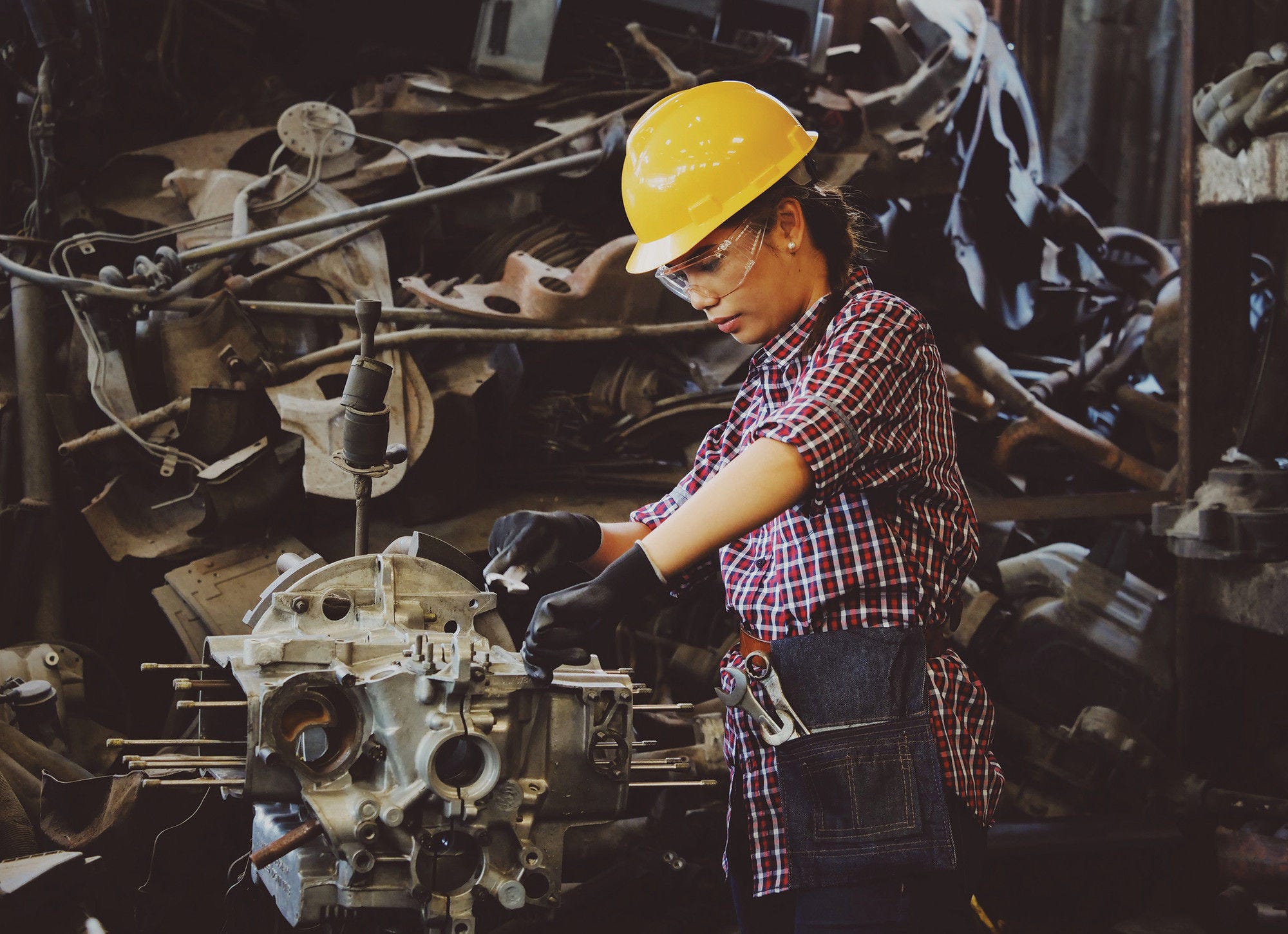Some manufacturing activities are among the most difficult human activities to make climate neutral and they are typically regionally concentrated. Across Europe these regions are often socioeconomically relatively weak. Yet these sectors provide relatively well-paid jobs in many of these regions. Some of these regions may also have more difficult access to infrastructure to provide the hydrogen, carbon capture and storage and zero-emission freight, which can be important to some of these activities. Industrial transitions to climate neutrality therefore have regional development implications. Since regions differ in their socio-economic conditions, understanding these regional development implications will help policy makers prepare a just transition. This publication identifies manufacturing activities that are particularly difficult to decarbonise and the transformations they require. It shows how these activities are distributed across European regions, focusing on employment at emission-intensive production locations. It identifies conditions for getting access to needed infrastructure and how access conditions differ across regions. It investigates the socio-economic vulnerabilities of affected regions, their manufacturing businesses and workers. In some regions, workers and firms may be particularly vulnerable, for example, because of low-skill jobs, type of employment contract or low productivity.
Regional Industrial Transitions to Climate Neutrality

Abstract
Executive Summary
Some of the economic activities that are most difficult to make climate neutral are in manufacturing and these activities are regionally concentrated. Industrial transitions to climate neutrality, therefore, have regional development implications. Since regions differ in their socio-economic conditions, understanding the regional development implications also helps prepare a just transition.
To eliminate greenhouse gas (GHG) emissions, manufacturing requires new forms of production and, in some cases, new energy carriers and raw materials. These in turn require different and more investment, including in infrastructure. The transitions will impact firms and so in turn workers, with some firms contracting (in particular those unable to make the leap) and some expanding. Whilst these may largely balance out at the national level, this is not a given at the subnational level, where the spatial distribution of specific sectors may result in asymmetric impacts.
Preparing for these transformations in those regions most exposed to transformation can help anticipate and manage these challenges whilst also exploiting opportunities. By acting early on the vulnerabilities identified in this report, policy makers can improve regional development opportunities and prevent protracted decline. This report, therefore, identifies key manufacturing sectors requiring particularly far‑reaching transformations. It describes how these activities are distributed across European regions, and the related zero-emission-consistent infrastructure needs and socio-economic conditions of the regions most exposed to these transitions.
The biggest emissions and transformation challenges are concentrated in a few key sectors
The key manufacturing sectors with particularly far-reaching transformation challenges identified in this report are:
coke and oil refining
chemicals
basic metals, in particular steel and aluminium
non-metallic minerals, in particular cement
paper and pulp
motor vehicles.
Sectoral transformations have place-based implications. The first four sectors generate the most manufacturing emissions across countries in absolute terms. Together with paper and pulp production, they are also the most energy-intensive relative to value-added. Moreover, refined oil product and coke production is likely to face the biggest relative employment loss, as fossil fuels are phased out. Basic chemicals and metals need to transform their production processes fundamentally, especially if they do not rely on carbon capture and storage (CCS), resulting in substantial demand for hydrogen. CCS is the most likely approach to be used to deal with process emissions in cement production. Primary production of paper and pulp will face increasing competition for biomass. Motor vehicle production generates relatively fewer emissions but is a major employer in many European regions. Moving to electric, lighter and fewer vehicles will have implications for employment and skills.
Reducing energy demand is key to the transition to climate neutrality, as most energy demand needs to be electrified and moved to renewables. In all industries, circular economy practices can reduce pressures on energy and material needs, by sharing equipment (e.g. cars), reusing goods or components (e.g. building components) or improving recycling (e.g. improved plastics sorting) for example. Doing so generates co-benefits for the environment and human health.
Many regions most exposed to the transition are in Central Europe
Some European regions employ up to 11% of workers in the key manufacturing sectors, broadly defined. Regional transformation challenges are likely to be the largest, where both employment shares and emissions per capita are high. These regions will have to decarbonise production assets while at the same time capitalising on opportunities to ensure a just transition. The combination of regional emissions and employment data allows for locating these transformational challenges.
Forty-one European regions are the most exposed to the transition based on their sectoral employment shares and emissions per capita. Many exposed regions are in Central Europe (including the Czech Republic, Germany, Hungary and Poland). Exposed regions in chemicals and oil refining are also in Western Europe (Belgium, Germany and the Netherlands). Northern Europe has exposed regions in paper and pulp and basic metals. Southern Europe includes some exposed regions in vehicle manufacturing (Romania), oil refining (Greece), non-metallic minerals (Italy) and basic metals production (Italy and Spain).
Regions differ in infrastructure needs to make industry climate neutral
The key manufacturing sectors require investments in new infrastructure to accelerate the transition and avoid territorial divergence. Regions have different challenges, however. For example, spatially concentrated electricity and hydrogen demand will require investment for production, transport and storage. Unabated CO2 emissions need to be transported to storage sites.
Hydrogen and CO2 are best transported via pipelines which are subject to scale economies. Clustered production sites, such as for the chemicals industry in Belgian and German regions, will face lower costs than dispersed ones. Dispersed production sites may depend more strongly on viable local hydrogen production and CO2 storage sites.
All sectors identified above depend on freight transport to ship their goods or acquire parts from upstream sectors. Road freight plays an important role, including in access to ports. If the costs of decarbonising road freight are substantial, this will impact firms in landlocked regions the most. Options to substitute rail for road are also regionally unequal. In peripheral European regions, rail network density is lower.
Some regions, their workers and firms are particularly vulnerable to the transitions
Most of the exposed regions are relatively weak on several socio-economic indicators. Gross domestic product (GDP) per capita and wages are up to 38% lower than the national average. The key manufacturing sectors provide a high number of relatively well-paid jobs, which are important for regional economies and development.
In some exposed regions, workers are particularly vulnerable to risks of skills gaps, job and income loss. For example, in regions with high basic metals and vehicle manufacturing, up to three out of four workers in these sectors are in low-skill occupations. Around 90% of exposed regions’ workers in coke production and oil refining earn wages higher than the national median.
Regions with less productive firms may also be more vulnerable. Low-productivity firms will find it harder to incorporate technological transformations and finance needed investment. In the chemical sectors, some regions have mainly lagging firms, with average labour productivity 15% lower than leading firms.









